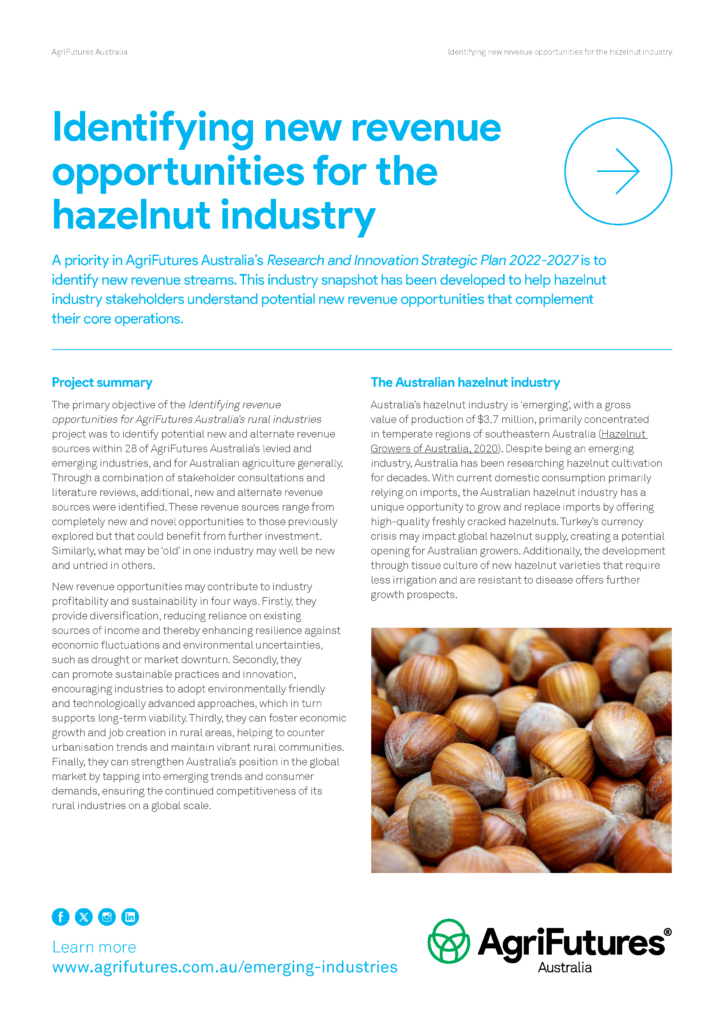The primary objective of the Identifying revenue opportunities for AgriFutures Australia’s rural industries project was to identify potential new and alternate revenue sources within 28 of AgriFutures Australia’s levied and emerging industries, and for Australian agriculture generally. Through a combination of stakeholder consultations and literature reviews, additional, new and alternate revenue sources were identified. These revenue sources range from completely new and novel opportunities to those previously explored but that could benefit from further investment. Similarly, what may be ‘old’ in one industry may well be new and untried in others.
New revenue opportunities may contribute to industry profitability and sustainability in four ways. Firstly, they provide diversification, reducing reliance on existing sources of income and thereby enhancing resilience against economic fluctuations and environmental uncertainties, such as drought or market downturn. Secondly, they can promote sustainable practices and innovation, encouraging industries to adopt environmentally friendly and technologically advanced approaches, which in turn supports long-term viability. Thirdly, they can foster economic growth and job creation in rural areas, helping to counter urbanisation trends and maintain vibrant rural communities. Finally, they can strengthen Australia’s position in the global market by tapping into emerging trends and consumer demands, ensuring the continued competitiveness of its rural industries on a global scale.
Industry-specific challenges
Specific insights relating to the Australian hazelnut industry include:
1. Length of time to realise returns on investment – trees require 7-10 years to reach their full production potential.
2. Inconsistent water supply significantly impacts the industry’s ability to expand and maintain reliable production.
3. International price competition with lower input requirements – including lower labour costs – limits the ability of producers to expand into value-added product manufacturing and the export market.
4. The industry is fragmented, with limited information sharing among growers and along the supply chain.
Industry-specific opportunities
Specific opportunities relating to the Australian hazelnut industry include:
1. Building scale through collaboration and partnerships – vertical integration and cooperative business models to solve fragmented industry challenges, and market access opportunities and consistency of supply to deliver retail requirements.
2. Value-add opportunities using hazelnut shells for wood pellets or briquettes; shell oils in nutraceuticals and cosmetics; and shells as an adsorbent for wastewater treatment.
3. Capitalising on the carbon stored within the hazel tree, which has a lifespan up to 80 years. Additionally, working with similar industries (e.g. orchards, vineyards) to develop a carbon methodology suitable for these enterprises.





